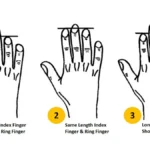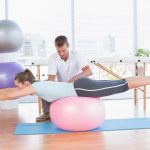Pilates is low-impact, and people love it very much. Many women want to stay active during pregnancy because it is good for the baby and for the mother’s main health too. But the body changes during pregnancy, so not every exercise is safe for pregnant girls.
Understanding How Pregnancy Affects The Body
Hormonal Changes And Joint Laxity
When a woman is pregnant the body releases a hormone that makes ligaments soft and they stretch. This helps in delivery but also makes joints very soft and weak so injuries can happen easily when exercising. Ligaments become loose and that causes pain in knees and hips. So while doing Pilates, you should be careful because joints do not hold the body the same as before.
Shifts In Centre Of Gravity
As the stomach becomes bigger, the body centre starts to move forward, and balance changes. Many women feel like falling or unsteady when they walk or do stuff like yoga and Pilates, especially in the third trimester.
This shifting in body posture can make balance very hard, which is not safe if exercise is not modified. That’s why many experts say to always do Pilates with help during pregnancy.
Core Muscle Adaptations
Pregnant belly grows and the stomach muscles need to stretch a lot. The middle part of the stomach muscle can separate this is called diastasis recti if you do wrong exercises. Pilates can help to strengthen the inner abdominal muscles but wrong movement will make muscles stretch and separate more which is bad for healing later on.
Impact On Balance And Stability
Balance is harder during pregnancy because weight is changing and muscles are working harder to keep you steady on your feet. This matters a lot for standing and moving in exercise. Stability goes down, and the risk of falling goes up, so Pilates must be modified to keep safe. Trainers give props and wall support for better stability.
Benefits Of Practising Pilates During Pregnancy
Strengthening Core Muscles Safely
Pilates makes the core strong, but gently, it helps to support the spine and stomach during pregnancy. A strong core can reduce stress on the back and hips both get stressed in pregnancy. But always remember not all core exercises are good during pregnancy, you need to do only safe ones for your belly and back.
Improving Posture And Reducing Back Pain
Because the tummy grows, women slouch more and develop back pain, which is very common. Pilates can fix the body posture so the spine is in good shape again. Better posture helps to carry the belly better, and muscles do not get tired too quickly. This means less back hurting in the daytime.
Enhancing Breathing And Relaxation
Pilates teaches deep and calm breathing, which can help to relax the mind and stay calm. This relaxed breathing is good during labour and delivery. Breathe practice also helps the body stay calm and brings extra oxygen for the baby who is inside the womb.
Promoting Pelvic Floor Health
Pelvic floor muscles carry your baby weight and get weak in pregnancy, so it is very important to train them carefully. Pilates helps you find and activate this muscle gently. Pelvic floor training helps after birth also so no pee leakage, and the body recovers faster.
Supporting Mental Health And Stress Reduction
Many women feel scared and tense during pregnancy because so many things change. Pilates is like a small me-time, and my brain feels fresh and better. Doing exercises makes the mind feel in control and happier. It is nice for mental health and mood to stay happy.
Risks And Considerations When Practising Pilates While Pregnant
Avoiding Supine Exercises After The First Trimester
When you lie flat on your back the heavy belly presses blood flow and this can cause dizziness or less oxygen. So after three months lying back is not good. Pilates needs adjustment from lying flat to half-sitting or standing exercises. Trainers know how to change it safely.
Monitoring For Diastasis Recti
If you feel a gap in the middle of your belly, you may have diastasis recti. This can get worse if you do wrong Pilates, like crunches. Always check with a doctor or trainer. The right kind of Pilates helps close that gap by working the inside stomach muscle, but the wrong move opens it more; you should be careful with that.
Recognising Signs You Should Modify Or Stop
If the heart beat goes too fast or starts feeling dizzy or the baby is not moving or pain comes then you must stop right away. Tiredness and short breath are warning signs also. Your body tells you when to slow down, so listening to it is very important to stay safe for the baby and for you.
Importance Of Certified Prenatal Instruction
Not all Pilates teachers know about pregnancy changes. So, pick a certified trainer who knows what to change or skip during class. Prenatal certified trainers also spot issues and tell you the correct body position so no injury happens during class.
Ensuring Hydration, Temperature Control, And Rest
Pregnant women heat up fast and get tired more easily. You should drink lots of water and make sure the room is cool. Also, keep breaks in between exercises and do not push too hard. The body needs love and gentle care during this time.
Exercises To Avoid During Pregnancy
- Crunches or any deep abdominal contractions: These can put stress on the abdominal wall and worsen diastasis recti. Avoid movements that squeeze or fold the belly.
- Exercises that require lying flat on your back (especially after the first trimester): This position puts pressure on the main blood vessels and may slow blood to the baby.
- Positions that involve extreme spinal flexion or extension: These movements may strain already weak or flexible joints and cause pain or imbalance.
- High-impact or ballistic movements: Sudden fast or jumpy motions might cause a fall or hurt the joints and muscles easily.
- Inversions or exercises that compromise balance: Moves where your head goes lower than your heart can be scary and throw off your balance.
Safe Pilates Exercises For Pregnant Women
- Standing pelvic tilts: These gentle tilts build awareness of the core and support the low back safely without extra pressure.
- Cat-Cow stretches for spinal mobility: This back-and-forth motion relieves pressure from the spine and helps stretch while supporting the tummy.
- Modified side-lying leg lifts: They help strengthen hip muscles and make the pelvis stronger to support the body well.
- Seated breathing and rib cage expansion exercises: Doing gentle flat sitting, inhale and exhale by the ribs increases deep breathing.
- Wall sits and gentle squats with support: These give lower body strength and use the wall as a friend for calm movements.
- Pelvic floor engagement through gentle Kegel work: Strengthens the muscles that hold the baby and helps after delivery.
- Use of stability props like balls and cushions for better balance: Tools make exercise safer and keep the body steady.
Finding The Right Pilates Class Or Instructor
Importance Of Certified Prenatal Pilates Instructors
A trainer who is trained with prenatal knowledge will make you feel safer and secure. They know how to take the right steps and avoid risky things. They also make the plan depending on which trimester you are so all exercises match your month and need.
Questions To Ask Before Joining A Class
You must ask if the trainer knows about prenatal Pilates if they changed steps for pregnant ladies and how many pregnant students come before. This helps to know if class is really safe for you. Also, ask what to expect from class and how they support you when your body feels tired or different.
The Difference Between Mat-based And Equipment Pilates For Pregnancy
Mat Pilates uses your body weight and simple props and can be done at home also. Equipment Pilates use big machines like reformers which help with support but need a trained person watching. Both are good if the trainer knows how to change steps. Most ladies start with a mat and add equipment later.
When To Choose One-on-one Sessions Over Group Classes
If it is your first time doing Pilates or your pregnancy is a little high-risk one-on-one session is better first. Personal trainer can focus only on your body needs. Private class means full attention to you, and this is good if you are feeling nervous or not sure what is safe.
When To Start Or Stop Pilates During Pregnancy
First Trimester Guidelines
In the first three months, you can start gently focusing more on breathing and safe movements. The body is changing a lot, and tiredness is more. Avoid hard steps and give your body time to adjust to the new baby growing inside.
Adjustments For The Second Trimester
This is when the belly is growing fast and balance starts to fall. Exercises should be changed a lot to keep joints safe and posture. Also, avoid lying on your back and use more standing or sitting positions for your Pilates.
Limitations And Safety After 30 Weeks Of Gestation
In the last few weeks my body has become extra heavy and very tired fast. Pilates should be very light and full of rest. Focus on breathing, pelvic floor, and relaxing moves, mostly not too heavy or strong anymore.
Postpartum Considerations And Comeback Timeline
After the baby is born, give the body one or two months, depending on health and how you feel. Go slow and build back core and pelvic strength step by step. Always speak to your doctor and trainer before restarting anything.
Conclusion
Pilates can be a nice, safe, and helpful exercise when a woman is pregnant if done the right way and with care. Modifying the moves and knowing body signals is very important. Always go to instructors who know prenatal safety and take breaks when energy feels low. Moving your body can bring happiness and better health during pregnancy. Stay active with a smile and feel good with each change happening in this beautiful journey.
Top Articles




